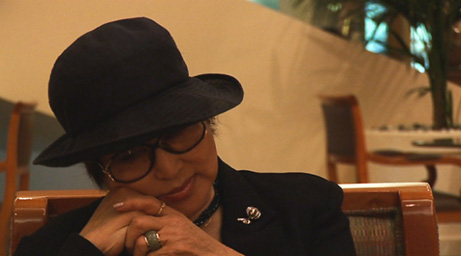FILMPROGRAMME, Magnus Bärtås
6-28 July
During the month of July we show two films by Magnus Bärtås.
Madame & Little Boy, 2009, 28 min
In 1978 the legendary South Korean actress Choi Eun-Hee was kidnapped in Hong Kong by North Korean agents and brought to Pyongyang. Two weeks later her ex-husband, the director Shin Sang-Ok, was abducted to North Korea as well. After spending five years in the country the couple was offered a “contract” which included a public statement declaring their willful defection to North Korea, a major film budget, enormous resources in terms of equipment and extras, and furthermore a re-marriage. Two years later the artist-pair managed to escape, after having directing and producing a number of films in North Korea, eventually taking political asylum in the United States. Not yet finished was Pulgasari (1985), a Japanese-style monsterfilm based on a Korean legend and made in the vein of Godzilla.
Madame & Little Boy is a video essay where historical lines and the circles of repetition in the life story of Choi Eun-Hee (Madame Choi) are examined. The genealogy of the monsters from Godzilla, via Pulgasari to Galgameth (Shin’s remake of Pulgasari in Hollywood) is interpreted as deliberate messages about atomic weapons.
As an experiment with situated narration this video essay takes a standpoint against documentarism and common documentary practice. The story of Madame and Little Boy (the code name of the Hiroshima bomb) is narrated by the American musician Will Oldham (aka Bonnie ‘Prince’ Billy) in a studio building next to The Nike Missile Site outside San Francisco. The studio building becomes place for viewing and talking back to images: the surrounding American landscape, the missile site (“a petrified monster”) where atomic weapons were kept in secrecy, clips from Shin Sang-Ok’s production together with footages from North Korea. This site, serving as an intersection of the present and past, is also the meeting place with the Choi Eun-Hee’s gaze, filmed in a hotel in Seoul.
BIOGRAFI, 2012, 22 min
Ola S. Svensson distinguished himself from early age with his large body and uncontrollable laughter, a photographic memory and knowledge that surpassed the teachers`. Through all his years in school and also even later in life, he retained a talent for attracting blows and kicks and heavy-handed embraces. Ola S. Svensson was obsessed with power structures and exposed him self to abusing power regimes, but he was also a literary talent and admired, and identified himself with, the UN nation Secretary-General Dag Hammarskjöld – the Swedish writer, economist and diplomat. At the university he revived the Swedish Social Democratic Student Association and after that he was elected into the party`s chairman committee. Despite Ola’s uncontrollable laughter, huge body and his habits to digress into long, detailed accounts of obscure fractions of knowledge – which made him appear less slick than politicians in general – he was predicted a bright future within the Social Democratic party.
His sudden sickness and death in AIDS coincides with the death of politics as an expression of intention and will and as a force of social imagination. Ola S. Svensson period in politics was a transit period to a phase that has been called the era of post-politics.
